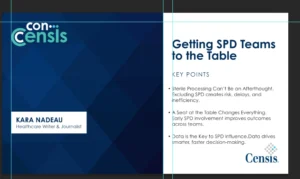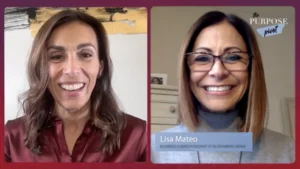The Collapse of SVB was a Wake-up Call, But High Yield and Loan Markets are Still Good Options
Recent bank failures, like that of SVB, might seem like canaries in the coal mine, but investors at Barrow Hanley have a more optimistic projection, thanks to high yield and loan markets. The collapse of SVB may be reminiscent of the 2008 crisis, but thankfully, the effects so far have been much less severe. High yield and loan markets were only indirectly affected.
First, the failure of the banks led to decreased lending by banks and a reduction in monetary velocity within the system. Additionally, the market volatility caused by the bank failures has reduced future rate expectations, which impacts forward-looking coupon rates that loans are likely to see. Furthermore, the failure of the banks has highlighted the scrutiny across commercial real estate portfolios, which has impacted banks and their willingness to lend.
In spite of this, loans are still an attractive investment option, with yields competitive with other fixed income and equity asset classes. And while there may be an increase in default rates within loans relative to high yield, the vast majority of the index is likely to manage through these higher rates.
The failure of SVB didn’t ruin investment portfolios, but it was a good reminder of the importance of assessing and managing risk within the financial system. Nick Losey, CFA, Portfolio Manager & Analyst at Barrow Hanley, has got additional insights on how to do this in the current market.
Nick’s Thoughts:
“Hi, my name is Nick Losey, Portfolio Manager at Barrow Hanley, covering the below investment grade asset classes, high yield bonds and leverage loans. I am here today to talk to you about the recent market volatility, specifically some recent bank failures and how that impacts the high yield and loan market. High level, there is very little direct impact into the high yield and loan market, but there are some notable indirect impacts that I want to talk about.
So, first let’s start, SVB was the largest bank failure since Lehman, and it created risk in the system that, actually, we saw pretty significant volatility within equity markets, high yield markets, loan markets, basically all asset classes across the board. The Fed was pretty quick to step in and inject liquidity into the system, and notably, through their bank lending facility, which allowed banks to pledge their securities at par value to the banks, or to the Fed, in order to gain liquidity to pay depositors that wanted out of the banks.
We have actually started to see deposits outflow slow, and first week in April actually saw an increase in deposits at banks, and so, you’re starting to see the risk of this wane. And SVB was a little bit of a one-off situation, given its mix, that high percentage of securities portfolio relative to all other banks, as well as the uninsured depositor mix that it saw. So, we don’t think that this is a systemic risk that we need to be concerned about. But those indirect risks that I was mentioning before, one, those securities portfolios are prevalent across banks, but they tend to be in the 5 to 20% of total assets of banks.
Now, if you’ve followed us for a while, we have talked about this dynamic, and we do think that this is just dead capital on banks’ balance sheets, which is going to reduce the ability of banks to lend in the near to intermediate term future. Add on top of that the deposit volatility that we’ve seen with SVB and Signature, and that further decreases the willingness of banks to lend into this current environment. So, we’ve viewed that as dead capital. We’ve kind of talked about that a few times, but view that as more of a reducing of monetary velocity within the system, something that we need to be aware of and is going to add to volatility just across asset classes.
Two is rate expectations. With SVB’s failure, we actually saw significant decline in future rate expectations and the kind of reduction of markets’ expectations of the Fed increasing rates in order to quell inflation. So starting, you know, that reduction actually is about 30 basis points for the peak, going from 5.4 to about 5.1%, so now expecting one hike from the Fed to the end of 2023. That expectation declined about 40 basis points from about 5.1% to about 5.7% looking forward. So, that more impacts loans and kind of that forward looking coupon that loans are likely to see.
Now, the third indirect aspect is really highlighting asset quality in this environment. Particularly what’s been brought to light is kind of scrutiny across CRE portfolios and how that is likely to impact banks and the willingness to lend. Now small banks, 10 billion and under, have larger exposure to CRE lending. That’s roughly about a third of their balance sheet. And as you move up in size, regional banks have about 15%, roughly, you know, kind of large banks have less than 10%. So, you know, when we look at the risk to bank balance sheets and the risk of losses and impairments, we actually do think that that is fairly low, but we’re continually assessing and reassessing this risk. Lending standards have been much more conservative post-GFC versus pre-GFC, and when we step back and look at these assets, these are cash flowing assets relative to what we saw kind of GFC timeframe where mortgages tend to be not cash flowing assets owned by the individual. So, where high yield alone actually sit in this current environment, high yield sits at roughly 8.5% yield to worse with a 475 basis point spread. We think that is very attractive and is likely going to compete extremely well with forward-looking expected returns relative to other asset classes, other fixed income asset classes, as well as equity asset classes. And a couple of the dynamics that we actually view as been being risk-mitigating within the high yield market is, you know, we have seen an increase in double B, so higher quality mix within the market itself, and increase in secured bond exposure within that. And just a higher quality business as issuer within the high yield market. So, we think these dynamics are actually risk-reducing in this cycle versus prior cycles.
Now within loans, we sit at 9.7% yield to where it’s at a 600 basis point spread. Now again, we have seen a significant increase in quality of underlying issuer within the loan space itself. And a lot of those smaller issuers has actually gone over to the private credit world. And so, when we look at, you know, these companies are more directly impacted by the increasing rates, but there has been significant increased financial flexibility over the past 15 years that these companies have seen. Again, higher margins, lower CapEx as a percentage of the business itself. So that financial flexibility is just increased over time. And so, we have modeled out all of these loans that we own to about a 6% Fed funds or so for rate. We do think there is likely going to be a higher default rates within loans relative to high yield, but we think that the vast majority of the index is actually going to be able to manage through these higher rates. And so, we expect kind of mid-single digit default rates coming from loans, but you do see that incremental spread that you earn from loans already accounting for a vast majority of that risk. So, extra 125 basis points in loans relative to high yield, and you’re just owning a very high cashflow asset.
Right now, the current coupon within loans is 8.6% average dollar price of 93. So, current yield for loans is nine and a quarter percent. We think this is very attractive and again, kind of think loans sit with high yield and likely to outperform through this cycle relative to other asset classes, alternatives that investors have for them. Any additional questions? We’re standing here ready to serve. Appreciate your time. Thank you.”









